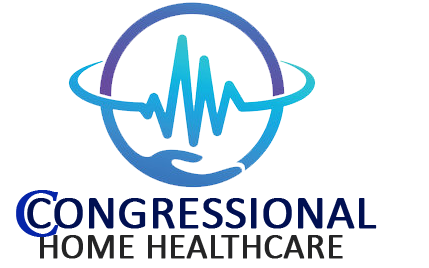The home care industry is experiencing a remarkable transformation in 2024, driven by cutting-edge technological advancements. Gone are the days when home care simply meant periodic nurse visits—today, AI-powered monitoring systems, telehealth platforms, and smart home devices are creating a new standard of care that is more efficient, personalized, and accessible. For seniors, individuals with disabilities, and those recovering from surgery, these innovations translate to greater safety, enhanced independence, and an improved quality of life—all within the familiar comfort of their own homes. This article explores the most impactful tech trends reshaping home care services and how they benefit patients, caregivers, and families alike.
1. AI & Machine Learning for Personalized Care
Artificial Intelligence (AI) and machine learning are revolutionizing home care by enabling smarter, data-driven care solutions. These technologies analyse vast amounts of patient data to detect subtle health changes, predict potential risks, and customize care plans in real time. For example, AI-powered wearables, such as smartwatches and biosensors, continuously monitor vital signs like heart rate, oxygen levels, and sleep patterns. If irregularities are detected—such as a sudden drop in blood pressure or an increased fall risk—caregivers and family members receive instant alerts. This proactive approach helps prevent emergencies before they occur, reduces hospital readmissions, and allows for more tailored care strategies. Additionally, AI-driven virtual assistants can remind patients to take medications, schedule appointments, and even provide companionship through conversational interactions. By integrating AI into home care, providers can deliver more precise, efficient, and compassionate support.
2. Telehealth & Remote Patient Monitoring (RPM)
Telehealth and Remote Patient Monitoring (RPM) have become indispensable tools in modern home care, especially post-pandemic. These technologies enable healthcare professionals to monitor patients remotely, reducing the need for frequent in-person visits while maintaining high-quality care. RPM devices, such as Bluetooth-enabled blood pressure cuffs, glucose monitors, and ECG patches, transmit real-time health data to doctors and caregivers, allowing for timely interventions. Automated medication dispensers with built-in alerts ensure patients never miss a dose, while virtual consultations via video calls provide convenient access to specialists. Studies show that RPM significantly improves outcomes for chronic conditions like diabetes and hypertension by enabling continuous tracking and early detection of complications. For homebound seniors and individuals in rural areas, telehealth bridges the gap in healthcare access, ensuring they receive the same level of care as those in urban canters.
3. Smart Home Devices for Safety & Independence
Smart home technology is playing a pivotal role in enhancing safety and independence for individuals receiving home care. Voice-activated assistants like Amazon Alexa and Google Home allow seniors to control lights, thermostats, and security systems with simple voice commands, reducing physical strain. Motion sensors and fall detection systems can identify unusual activity—such as a prolonged absence of movement—and immediately alert caregivers or emergency services. Smart lighting systems automatically adjust brightness to prevent night-time falls, while temperature regulators maintain a comfortable environment to avoid heatstroke or hypothermia. Some advanced systems even include stove shut-off devices to prevent kitchen accidents. These innovations not only minimize risks but also empower seniors to live more autonomously, giving families peace of mind knowing their loved ones are protected around the clock.
4. Robotics in Home Care Assistance
Robotic technology is making significant strides in home care, offering both practical assistance and emotional support. Companion robots, such as PARO the therapeutic robotic seal, provide comfort to seniors with dementia or Alzheimer’s, reducing anxiety and loneliness through interactive engagement. On the functional side, robotic exoskeletons assist stroke patients and individuals with mobility impairments by helping them walk and rebuild muscle strength. Automated vacuum cleaners and mopping robots take care of household chores, allowing caregivers to focus more on personal care rather than cleaning tasks. In Japan, where aging populations are a growing concern, robots are already being deployed in nursing homes to assist with lifting patients and delivering medications. While robots will never replace human caregivers, they serve as valuable aides, enhancing efficiency and improving the overall caregiving experience.
5. Blockchain for Secure Health Records
As home care becomes increasingly digital, data security is a top priority. Blockchain technology is emerging as a game-changer for protecting sensitive patient information. Unlike traditional databases, blockchain creates an immutable, decentralized ledger that prevents unauthorized tampering with medical records. This ensures that patient histories, treatment plans, and medication logs remain accurate and secure. Blockchain also streamlines communication between doctors, caregivers, and family members by providing instant, permission-based access to critical health data—particularly useful in emergencies. For example, if a patient is admitted to the hospital, authorized healthcare providers can quickly retrieve their complete medical background without delays or errors. By adopting blockchain, home care agencies can enhance trust, compliance, and coordination in patient care.

